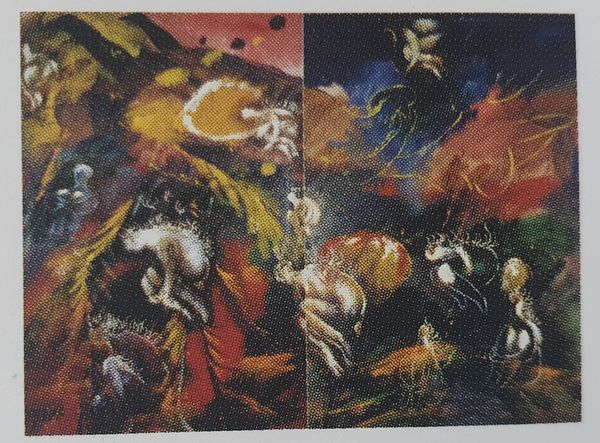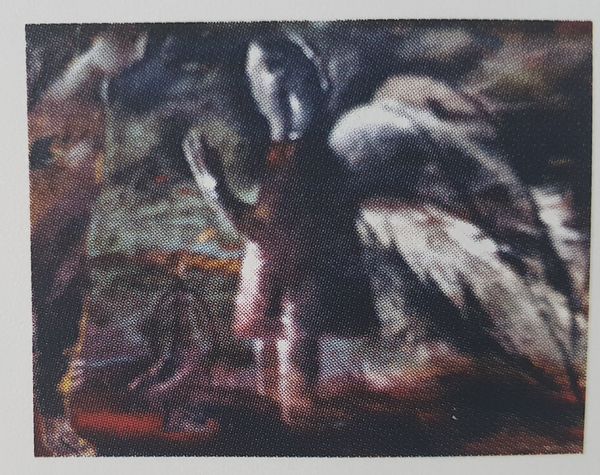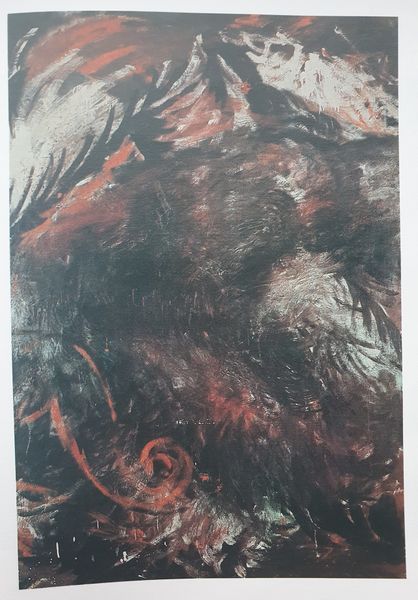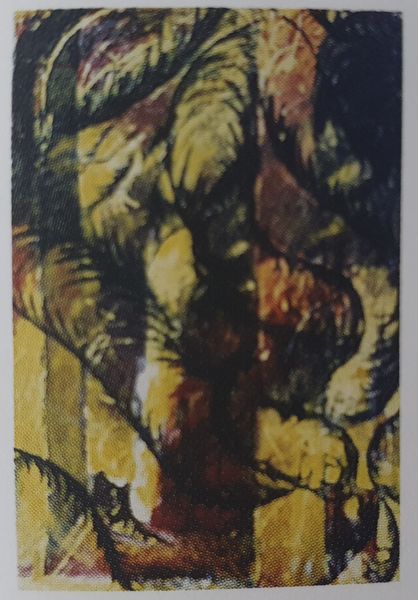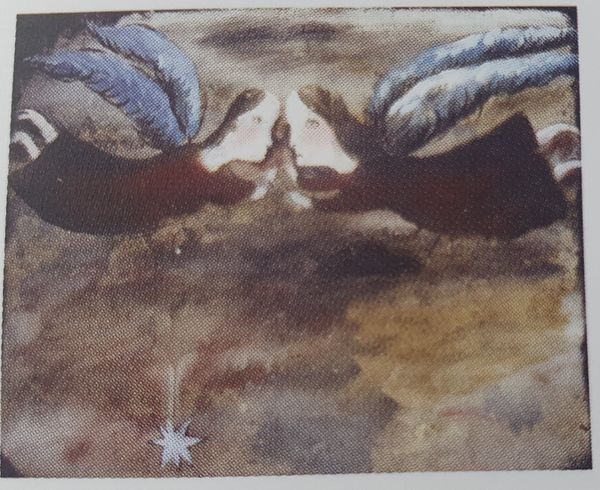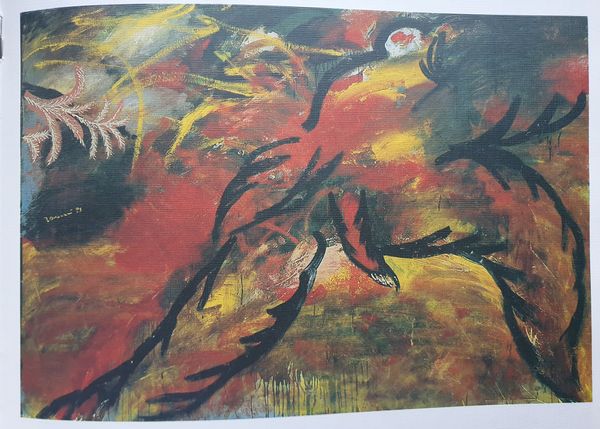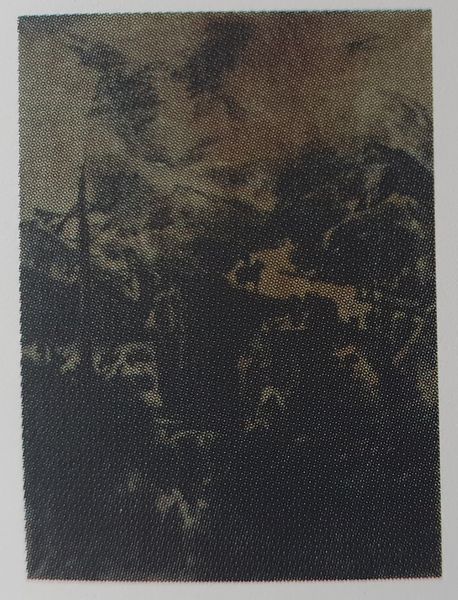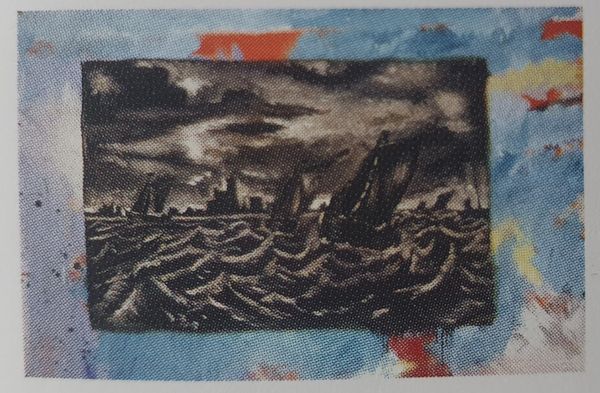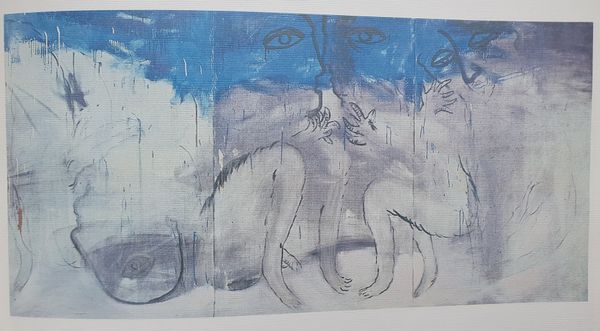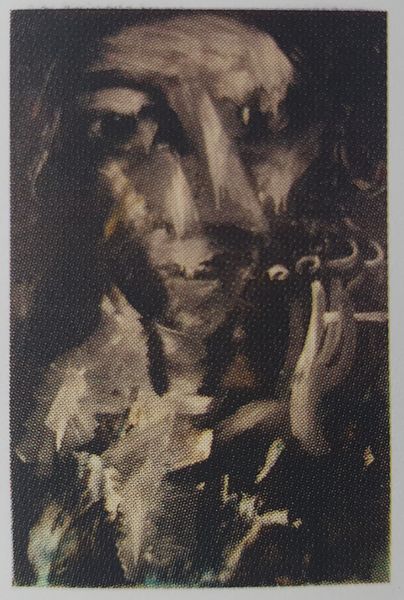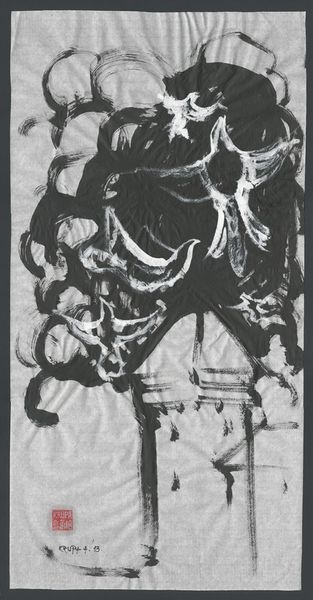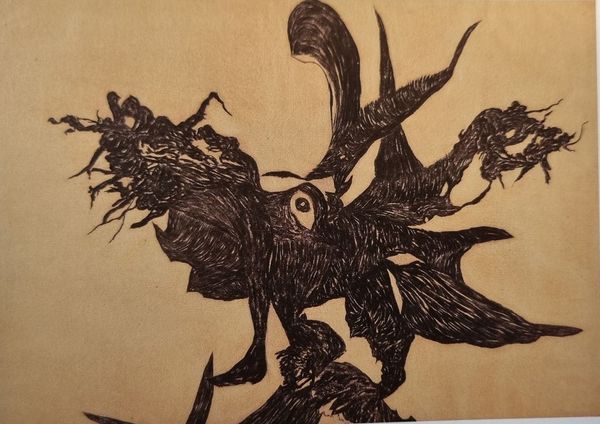
Dimensions: 300 x 400 cm
Copyright: Oleg Holosiy,Fair Use
Editor: Here we have Oleg Holosiy's "Attiss" from 1989, a mixed-media piece including acrylic paint. I'm struck by the apparent duality here—almost as though there are two separate canvases. How does this visual division function, in your view? Curator: Holosiy's work, particularly from this period, exists within a fascinating socio-political context: the waning years of the Soviet Union and the rise of Ukrainian independence. This apparent "duality" might be less about separate canvases and more about reflecting the fragmented identity and conflicting realities experienced during this transitional period. The abstract expressionist style itself was seen, by some, as a Western, even rebellious, artistic language. Does this reading of resistance and subversion seem plausible? Editor: Absolutely. I can see that. The darker, chaotic mass on the right does feel like a suppression, and the lighter, almost ethereal section on the left, like a budding sense of liberation, as reflected by society at that time. But, how does the art world factor into his choice of style here? Curator: The art world both reflected and shaped these sentiments. Holosiy was part of a movement of Ukrainian artists pushing against socialist realism, embracing styles that allowed for individual expression and critique. These choices were inherently political statements, positioning them within a broader international discourse on freedom and artistic autonomy. Were there particular artistic institutions in Ukraine during this time, pushing towards freedom? Editor: I've read that private studios became very important at this moment as unofficial locations of production and freedom. Curator: Precisely! The work moves past being aesthetically intriguing to becoming a documentation and articulation of complex negotiations around national identity. The fractured composition echoes the splintering Soviet empire and the burgeoning, not-yet-cohesive identity of a newly independent Ukraine. Editor: That definitely reframes my understanding of the piece; it’s no longer just abstract, but socially charged. I'll consider this context next time I look at Holosiy's "Attiss." Curator: Indeed. The politics of imagery can truly amplify the voices of an era, creating new ways of considering the artwork.
Comments
No comments
Be the first to comment and join the conversation on the ultimate creative platform.
